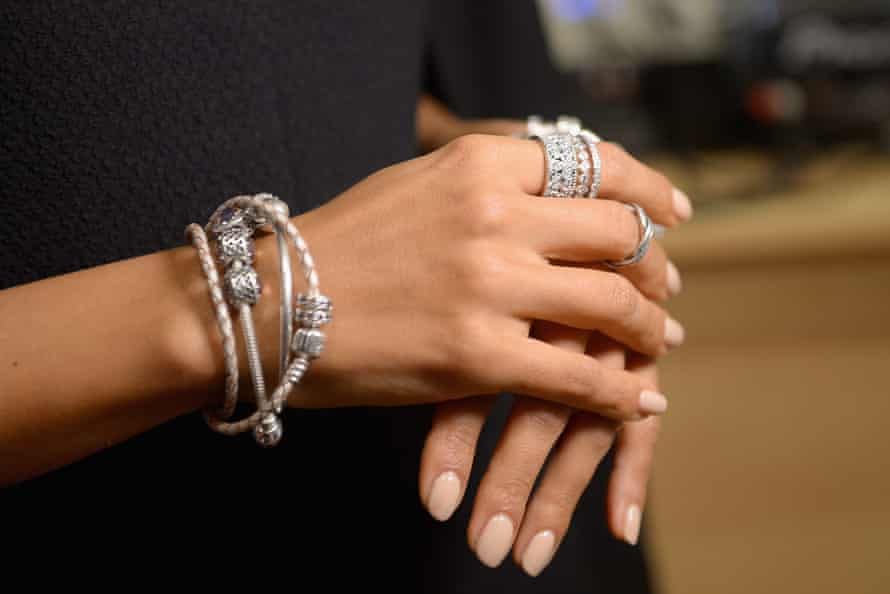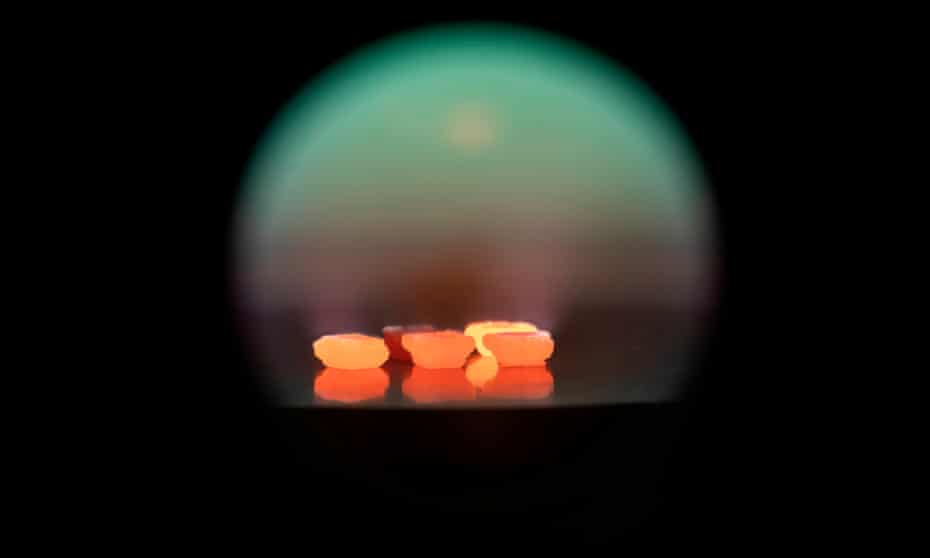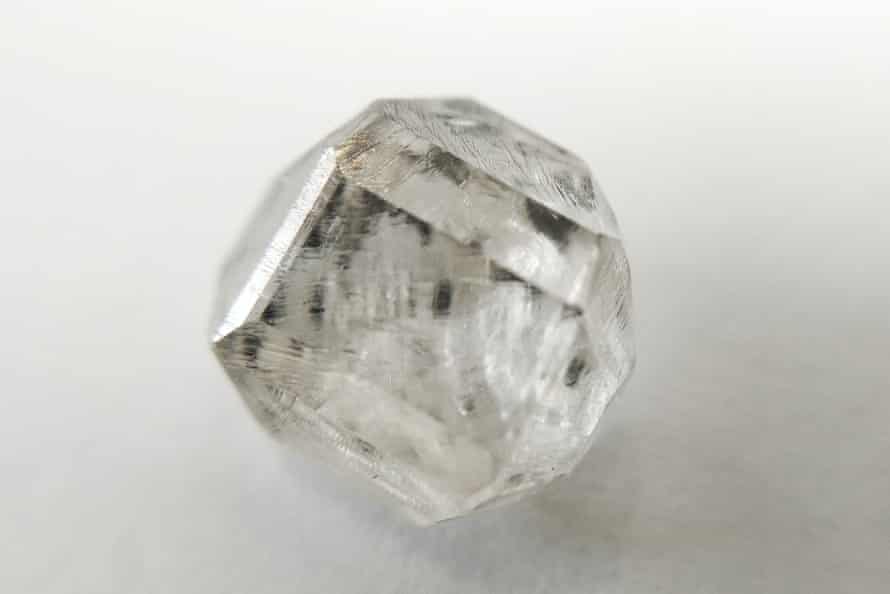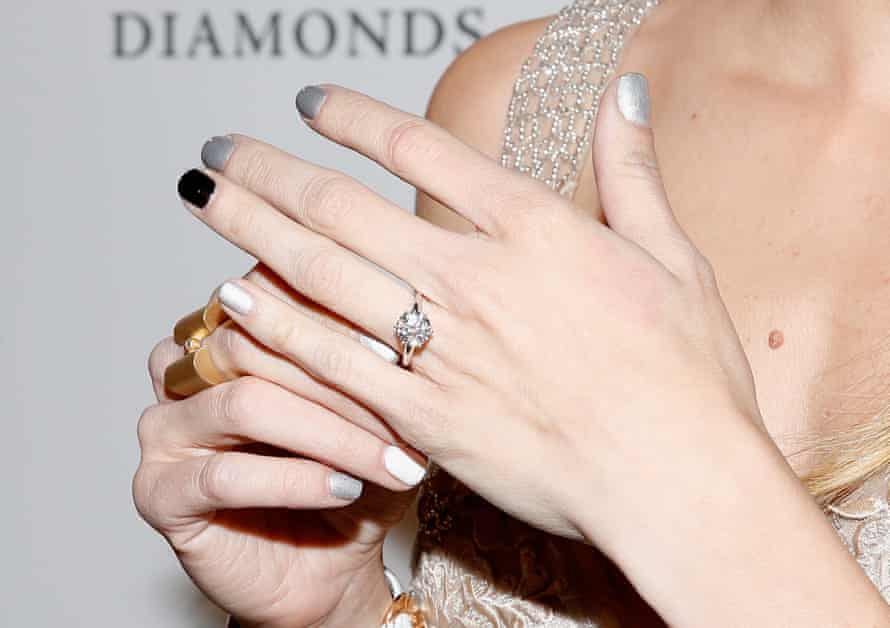Switching to synthetic gems may have environmental upsides but it could harm the very communities consumers worry about
Diamonds have long been in the debt of marketing genius. Until the 1940s they were not a popular choice for engagement rings. Then, in 1947, a stroke of brilliance: De Beers’ “A Diamond is Forever” campaign. The slogan was a hit. The market transformed. Today diamond engagement rings are ubiquitous, winking from the windows of upmarket jewellers.
Earlier this year came another glittering moment in diamond PR. Pandora, the world’s largest jewellery retailer, announced it would be switching entirely to lab-made diamonds. It generated positive headlines around the world, dubbed an “ethical stand against mined diamonds“.
Pandora is not alone. In 2020 De Beers invested in a lab-grown line, launching a facility to churn out up to 400,000 diamonds a year. Other retailers tout their laboratory stones as “100% ethical and conflict free” or “an ethical choice”. It is a neat resolution for an industry shadowed by reports of exploitation, deftly crafted for millennial consumers concerned with the ethics of consumption.

But the reality, experts and workers say, is more complicated. Switching en masse to lab-made gems may have environmental upsides, and relieve companies of reputational risks. But it could disfranchise the same communities that consumers are concerned for – and it comes at a moment when traceable, ethically mined gems are more accessible than ever.
‘Something is wrong’
“If you start to grow diamonds in a lab, you’re not only taking away a job, but you’re also closing down communities and closing down countries,” says Urica Primus. “How will [miners] survive, how will they sustain themselves, their livelihoods, their families?”
Primus, 30, is from a mining family in Guyana. One of the poorest countries in South America, Guyana has a history of fuelling profits overseas. British slave-owners grew rich off Guyanese slavery. Natural resources – gold, diamonds, minerals, oil and gas – are its largest export, which about 18% of the population rely on for employment.
After years helping her family mine, Primus started extracting from her own small-scale pit in Tamakay, a gold and diamond-mining region, at 18. Today she is president of the Guyana Women Miners Organisation.
Small-scale mining is tough work, particularly for women. Many mines are extremely remote, in areas Primus calls “raw bush – just jungle and trees”. Miners live with the hazards of attack and armed robbery, women with additional risks of sexual assault. In the rainy season some mines are at risk of collapse, killing miners inside them. But mining is also a crucial source of income, development, funds for education. Companies that care about ethics should invest in improving standards, not disappear, she says.

“These companies have made millions and millions of dollars from mining. Now, what percentage of the profits are they willing to give back, and support the development of the industry that has basically kept them alive for decades?”
Her concern is not only for miners, Primus says. “It’s the government’s ability to finance development of the country by way of the contributions and GDP received from the mining industry, it’s the families of miners … the entire ecosystem of mining will be impacted by that shift.”
The rise of “ethical” marketing for lab-made gems also comes when there are certified fair-mined gems and gold products on the market. “It seems as though we have given up before we even tried,” Primus says. “If you haven’t tried that approach of supporting miners in ethically mining gold, then how do you know it’s not going to work? … If your first option is to globally put millions of people out of a job, then something is wrong.”
Synthetic diamonds are physically identical to mined. They are created in a lab from a tiny diamond “seed”, built up either in a high-heat, high-pressure chamber or from circulating gases, broken down into atomic parts. They are dramatically cheaper – around a third of the price of a mined equivalent. While diamonds are prominent, other gemstones are also being grown in labs.
Internationally the market for synthetic stones is growing. The pandemic cratered mined diamond sales, but even before 2020 they were in decline – production had fallen by about 5% each year since 2017. Meanwhile the lab-grown market, while still only a small portion, has grown, up 15-20% in 2019 according to the Bain Diamond Report.

It concluded that the mined market faced two major disruptors: the growth of lab-grown gems; and consumers’ increased focus on ethics and sustainability.
“They’re framing it in terms of ‘this is an ethical decision’ when in my opinion it’s the complete opposite,” says Cristina Villegas, mining director of development nonprofit Pact. “It’s just completely walking away from the social aspects of sustainability.”
Villegas works with small mining communities internationally. “When you walk away, prices drop, you’re abandoning whole communities,” she says.
The ‘blood diamond effect’
Diamonds’ reputational problems hit overdrive in 2006 with the blockbuster movie Blood Diamond. In the years since, NGOs and journalists have highlighted challenges in mining, including child labour, environmental degradation, and dangerous conditions.
“A lot of people have watched the movie Blood Diamond,” says Sam Johnson, spokesperson for Novita Diamonds, which sells lab-made stones. The company’s site calls them “the only truly ethical diamonds in the market.”

He says business increased about 400% in the last 18 months, and many customers cite concerns about child labour or ethical implications of mined diamonds. “Lab-grown diamonds [are] created in a hi-tech laboratory with hi-tech equipment. There’s no children involved,” he says.
But experts say the coverage and dramatised accounts can backfire, stigmatising mining communities. Mining and society expert Prof Saleem Ali says large parts of the sector have reformed – but public perception hasn’t. “You had the episode in Sierra Leone and you had DRC issues, but that was 10, 15 years ago, and there was clear legislation passed to address it,” Ali says.
While parts of the mining sector still have major problems, boycotts don’t help mining communities. “We should try to solve the problem rather than just kind of ‘cutting the umbilical cord’ so that you just don’t have to deal with the problem,” Ali says.
Villegas argues that about 80% of diamonds are now traceable – and points to other certifications, like Fairmined Gold. “If you’re going to claim ethics, why not lean into the reform efforts?” Villegas asks. “Efforts that are sourcing from miners who … are on the path to doing the right thing, instead of walking away?”
Transforming the market
While it generated outsized headlines, Pandora’s own purchasing shift will be small. In 2018, less than 1% of its stones were mined.
But the largest jeweller in the world is influential. Announcing the switch to lab-made, Pandora said it aimed to “transform the market”. In an interview with Bloomberg, the Pandora CEO, Alexander Lacik, said of the move: “We are applying the marketing muscle. We’re going all in.”
Asked whether the framing of lab-made as more “ethical” was misleading, Mads Twomey-Madsen, vice-president of corporate communications & sustainability at Pandora, said: “Well, we actually haven’t made that claim.”
He said the company’s focus was on environmental sustainability, and part of a wider shift to take the company carbon neutral. “For Pandora to become a low carbon company, this is the right way to go for us,” he saod.

Those selling synthetic stones also argue that they are expanding the pie, rather than taking a slice. Pandora say synthetic stones are cheaper, and will create a new market for diamonds. “Bear in mind that we will not even make a dent in the market for mined diamonds, because the amount we use was so small that I doubt that you’ll be able to see any ripple effects of that,” Twomey-Madsen adds. If the market does expand, Ali says, “it doesn’t have to be a zero-sum game”.
The claim lab-made gems are more environmentally sustainable is complex. A report commissioned by the mined diamond sector concluded mined produced less CO2 than synthetic – but failed to include the full impact of creating a mine. Pandora says if produced using 100% renewable energy, their lab-made stones would create just 10% of the emissions of a mined diamond.
Ali says that synthetic diamond companies are on firmer footing with environmental claims: lab-made diamonds have potential to be generated with 100% renewable energy.
“I think they can make the environmental argument, and that’s fair,” he says. “On the social side I think they need to be very careful. They do not provide as many jobs as the mined diamond industry does. And they do not provide them in places where they are needed most.”